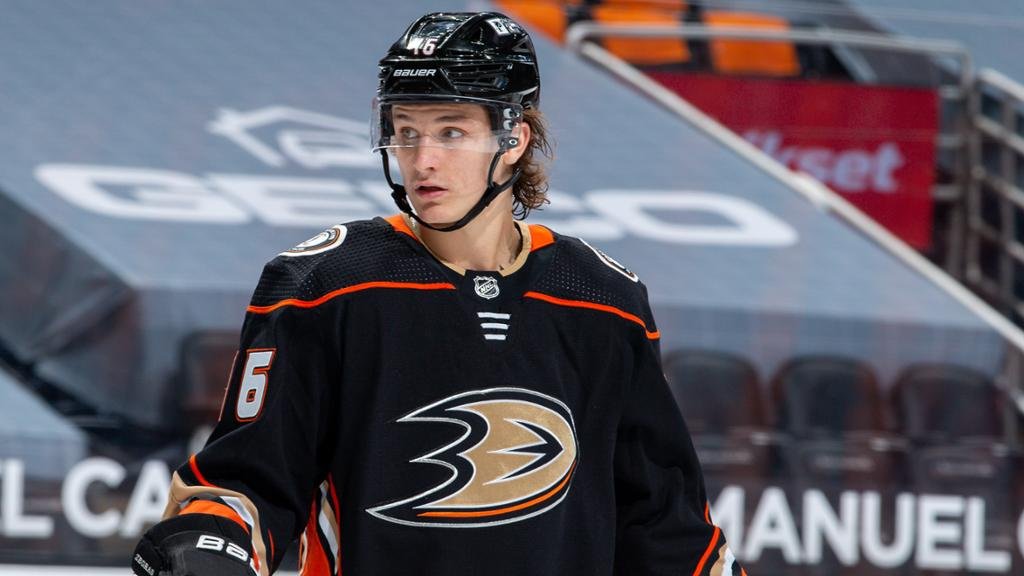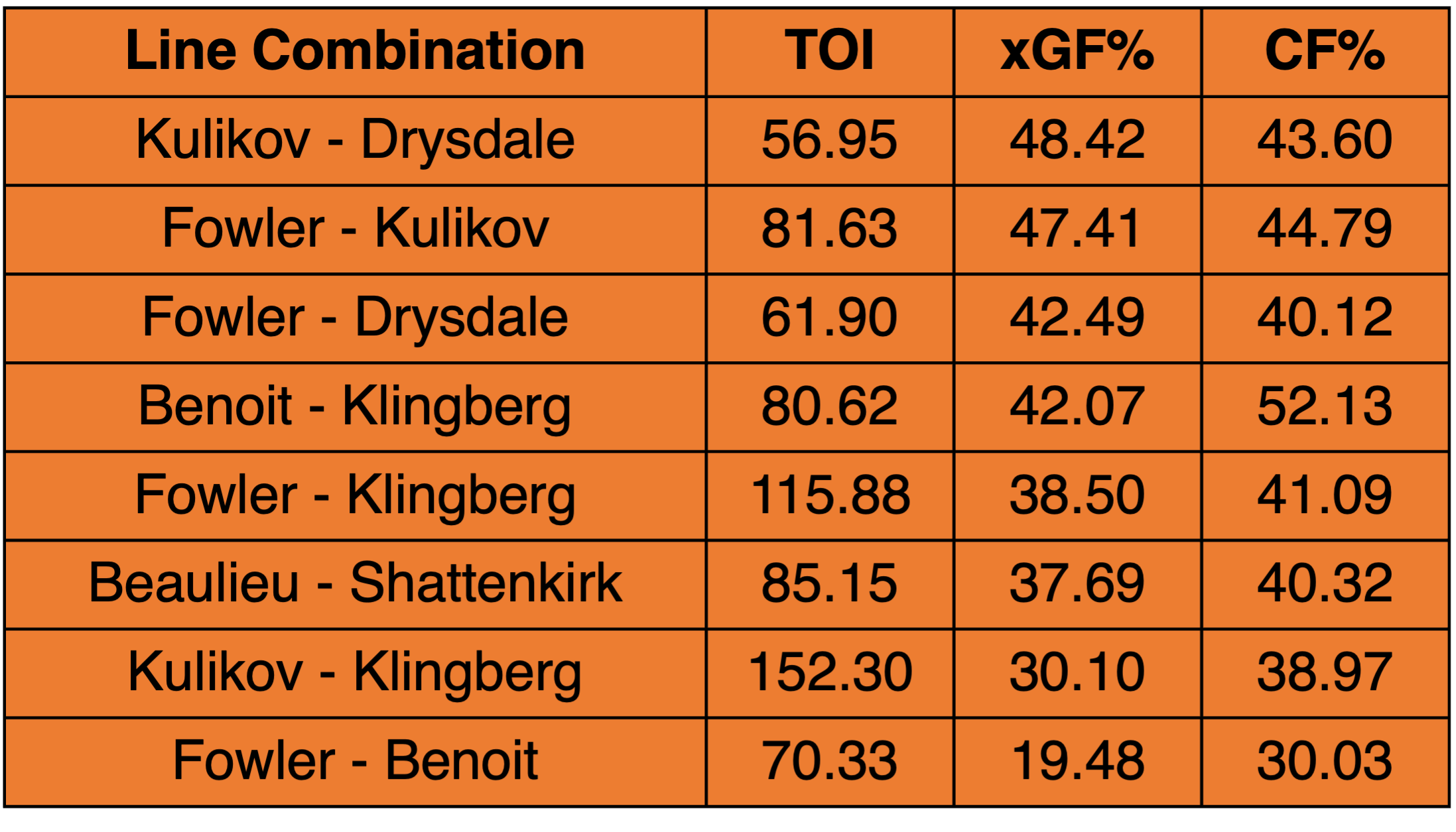Anaheim Ducks Quarter Season Review
The Anaheim Ducks (6-13-1, 13 points, 8th in Pacific Division) have now reached the approximate quarter-way mark through their 2022-2023 season. After a very active offseason and a preseason that generated significant excitement and hype amongst Anaheim’s fanbase, the Ducks have had a very turbulent first 20 games. Crash The Pond will review the team’s performance thus far, and look ahead to the coming weeks as we head into the holiday season. Unless otherwise noted, all statistics cited in this article are obtained from Evolving Hockey. We also note that the sample size of 20 games is not sufficiently large to draw robust conclusions about any individual player or line combination. However, it is large enough to identify and diagnose some clear trends and characteristics of Anaheim’s play thus far in the 2022-2023 season.
Team on-ice Performance
The Ducks have posted a 40.10% xGF% and 43.93% CF% at 5v5 this season, putting them at 31st and 28th, respectively, in the NHL. On the powerplay, Anaheim’s xGF/60 is 7.04, which is ranked 24th in the NHL. On the penalty kill, their xGA/60 is 9.22, which is ranked 26th in the NHL. Their game-by-game 5v5 xGF% is shown below, courtesy of MoneyPuck.
The Ducks have only posted an xGF% above 50% in two games this season (against the Detroit Red Wings and Chicago Blackhawks). Overall, the on-ice product from Anaheim at both 5v5 and on special teams has been poor thus far in the 2022-2023 season.
Forwards
The 5v5 play from Anaheim’s forward lines has been a mixed bag so far this season. Their top line of Adam Henrique - Trevor Zegras - Troy Terry has been excellent, logging the most 5v5 TOI (minimum TOI: 40 minutes) and impressive xGF% (58.17) and CF% (54.00) numbers. The recently deployed line of Brett Leason - Mason McTavish - Max Jones has also played well, albeit in less than half the sample of Anaheim’s top line. Ducks head coach Dallas Eakins has also used a 3rd line consisting of Max Comtois - Isac Lundestrom - Jakob Silfverberg, which has been a solid, yet very low event, combination. All three prominent forward lines featuring Ryan Strome or Frank Vatrano, who both joined the Ducks as free agents this past offseason, have struggled mightily, posting xGF% numbers below 40%.
Anaheim’s three best forwards from an individual on-ice perspective so far this season have been Adam Henrique (49.58% xGF), Trevor Zegras (46.80% xGF), and Troy Terry (46.48% xGF). Their EV RAPM charts for this season are shown below.
Henrique, Zegras, and Terry have all been adept at goal scoring and generating quality chances. Henrique and Zegras have been well above replacement defensively (especially at suppressing shot quantity), while Terry surprisingly has struggled in denying quality chances defensively.
While the Ducks have not gotten consistent play from some of their forwards, their top line has been outstanding, and the play of second-year C Mason McTavish has also been a huge positive for the team so far this season.
DEFENSEMEN
The biggest anchor attached to the start of Anaheim’s 2022-2023 campaign has been their abysmal defensive play. As shown below, no single Ducks defensive pairing has posted an xGF% above 50% (minimum TOI: 50 minutes).
In addition to recently added forwards Ryan Strome and Frank Vatrano, the Ducks also signed coveted free-agent defenseman John Klingberg this past offseason. Early returns on his signing have been very poor. Klingberg has posted the 2nd-lowest xGF% (36.97) for Ducks defensemen this season, and his RAPM chart (shown below) indicates how inept he has been at denying quality chances. Klingberg has, however, excelled on the powerplay.
In short, Anaheim’s defense has been a sieve through the first quarter of this season. While the injury to Jamie Drysdale was a significant blow, the Ducks still need to find a way to generate more consistent quality defensive play if they are to have any chance at turning their season around.
GOALTENDERS
Anaheim’s top netminder, John Gibson, has had an up-and-down start to the 2022-2023 season. His GSAx of -2.03 ranks 23rd of 29 in the NHL (minimum TOI: 400 minutes), and it has largely been driven by his very poor shorthanded performance (see below Goalie Chart). However, Gibson’s play has been trending upward over the past several games, punctuated by a brilliant performance this past week against the New York Rangers (GSAx: 2.44). Backup Anthony Stolarz has been near replacement level over a small sample of games played thus far this season.
COACHING
Ducks GM Pat Verbeek picked up the team option on head coach Dallas Eakins this past offseason, providing an opportunity for Eakins to prove his value and earn an extension with a much-improved roster and bolstered support from management this season. Thus far, Eakins has failed to make a convincing case for why he should be brought back next season on a new contract. The Ducks have been one of the worst on-ice 5v5 teams through the first quarter of the 2022-2023 season, and their special teams play has been abysmal, often lacking any semblance of structure or cohesive strategy. Eakins has also been very quick to shuffle line combinations with little discernible underlying rationale, employ an 11F-7D strategy, and implement a highly conservative strategy while leading late in games in an attempt to force OT (e.g., this past Wednesday’s game against the New York Rangers). In general, it is reasonable to say that Eakins has far from optimized the talent on this roster, and his odds of making it through this season and receiving a new contract from Verbeek seem much lower than they did just a few months ago.
Looking forward
Anaheim’s start to the 2022-2023 season has been tumultuous, but there is still plenty of season left to go. The Ducks have enough talent on their roster to improve upon their lackluster results up to this point in the season. However, they will need vastly improved play from their defensive core and bottom-6 forward group, along with more consistent goaltending, in order to avoid being sellers again at this year’s trade deadline. In addition, the Ducks may need to overcome the consistent puzzling decision-making from Eakins if they hope to make a mid-season run toward the postseason. The one guarantee is that Anaheim’s next 62 games will have plenty of intrigue for Ducks diehard fans whether they continue trending towards a top lottery pick in next year’s draft, or turn their early season tribulations into a comeback story for the ages.








